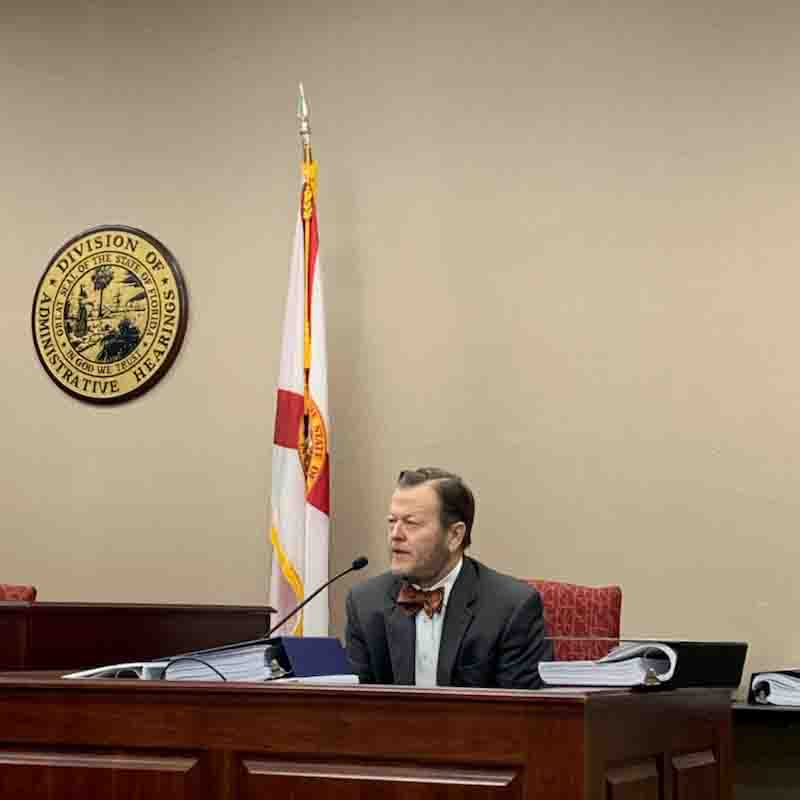by Ichetucknee Alliance President John Jopling

The mission of the Ichetucknee Alliance is to ensure the restoration, preservation and protection for future generations of the eco-systems . . . of the Ichetucknee River, including all its associated springs.
The Florida legislature, in passing Florida Statute 373.801, mandated that the Florida Department of Environmental Protection, the water management districts and the Department of Agriculture and Consumer Services “ . . . must coordinate to restore and maintain the water quantity and water quality of the Outstanding Florida Springs.”
Gosh, sounds like the Ichetucknee Alliance (IA) – a group of volunteer citizens working together to save the Ichetucknee – and the Florida Department of ENVIRONMENTAL PROTECTION (DEP) have identical missions, huh? Why, then, was I driving west on I-10 early Tuesday morning, headed to the Division of Administrative Hearings in Tallahassee, to testify on behalf of the Ichetucknee, one of nine advocacy groups and individuals petitioning the State of Florida to simply do what its legislature required it to do to ensure the restoration of the quality of its springs waters?
Moreover, why was the DEP challenging the Ichetucknee Alliance’s standing – the legal right to dare to question the sufficiency of the DEP’s recent Basin Management Action Plan (BMAP) – the “roadmap” required by state law to achieve reduction of nitrate levels in springs like the Ichetucknee to acceptable, healthy levels within 20 years? Hadn’t the issue of IA’s “standing” been answered three years ago in a similar challenge to the state’s equally deficient plan to restore the quantity of the springs’ waters by adoption of toothless “MFLs” Minimum Flows and Levels)?
These were thoughts going through my head on the drive to Tallahassee. I expressed them directly to the DEP and its team of lawyers from the witness stand. I also testified to the old adage that “a failure to plan is a plan to fail.” Indeed, it appears from the very face of the present BMAP that it constitutes “planned failure.”
How does anyone take seriously a Santa Fe River BMAP (which covers the Ichetucknee) which, on its face and by its own numbers, aims to reduce by only one-third to two-thirds the amount of nitrates its own scientists say must be eliminated from these spring sheds if the Ichetucknee is to be restored to even the level the DEP considers acceptable?
How does one take seriously a BMAP which relies heavily on “Best Management Practices” (BMPs) – suggested guidelines for reduction of nitrates deposited by farm fertilizers and livestock waste – when all existing data points to the utter ineffectiveness of these BMPs in actually reducing nitrate levels in our affected springs?
How does one take seriously a BMAP which fails to include the acquisition of a single acre of conservation land within the BMAP’s “priority focus area” for the Ichetucknee, despite the uncontested and obvious fact that the one certain way of reducing the nitrates that are greening and strangling our springs is by assuring that sensitive lands in the spring sheds are used in ways that don’t add to the problem?
These are the questions I raised in my testimony. If we prevail, the administrative judge will enter an order essentially telling the DEP to “get serious” and come up with a plan that at least has a real shot at working to reduce nitrates in our springs.
Here’s the good news from all this. We know the problem. We know the sources of these nitrates. We know fair, equitable solutions to the problem. And we know that enactment of these real solutions would both fulfill the DEP’s mandate, as well as accomplishing the Ichetucknee Alliance’s mission to “bring back the blue” to these beloved waters.
It just takes political will. And perhaps a few fierce little watchdogs like the Ichetucknee Alliance to keep reminding our hired help in Tallahassee what we hired them for.
